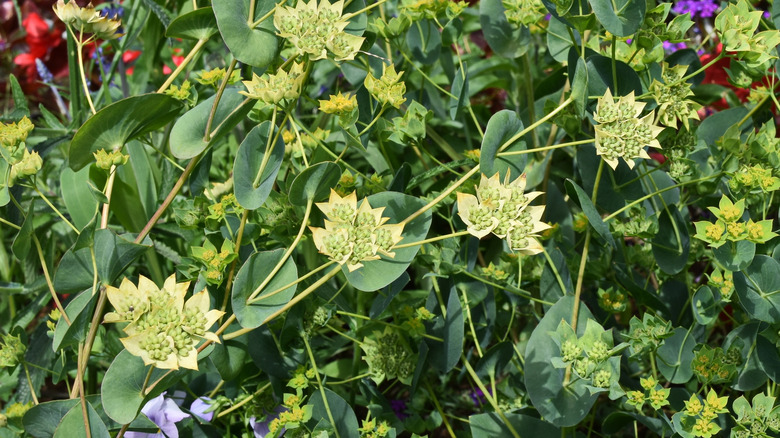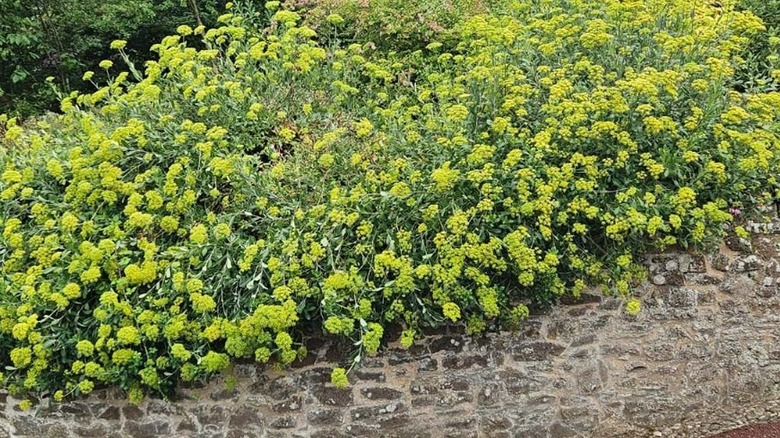Bupleurum Is The Underrated Plant You'll Want To Add To Your Garden
Bupleurum (Bupleurum rotundifolium) is highly regarded by both landscapers and florists for its airy clusters of yellow flowers and attractive blue-green, sharply pointed leaves. If you haven't come across this graceful plant before, that's understandable. While known by several names, including green gold, hare's ear, hound's ear, and thoroughwax, it's most often grown for market and remains somewhat unfamiliar in home garden circles. It's a flower you can grow from seed for a budget-friendly garden, though germination can be finicky. Still, thanks to the plant's beauty and versatility, it's worth considering for your own garden or landscape.
Native to central and southern Europe, this leafy herb, which can reach 1 to 2 feet tall at maturity, is a versatile option for any garden. Bupleurum's muted yellow blooms and softly tinted foliage resembling eucalyptus leaves create an appealing backdrop for bolder, more colorful flowers. The plant also adds subtle texture on its own. The flowers are excellent for styling vases in the home, thanks to their vase life of 7 to 10 days and ability to complement brighter stems. In the garden, bupleurum plants reward you with a long season of color, blooming steadily from summer through fall. The plant self-seeds if not deadheaded, making it budget-friendly. Although typically grown as an annual, it can survive as a short-lived perennial in places without frost (Zones 10 and 11). Most gardeners can successfully grow the plant in Zones 3 to 10 once they master seed germination (or simply buy live plants).
How to successfully grow bupleurum
First-time growers of bupleurum should see success if they sow the seeds outdoors in the fall or spring. The soil should be cool and there should still about a month and a half before the first frost if you plant in fall. Cover the seeds with a light dusting of dirt, and they will overwinter in the ground. They need a period of freezing, called stratification, to germinate. For best results, choose a location that receives full sun or part shade. Keep the soil moist until the seeds sprout, which should take about two weeks. All going well, you can expect dainty flowers come summertime.
Bupleurum seeds can be started indoors in the winter and transplanted outside in spring, but this method can be challenging. Germination can be spotty, and you may have difficulty getting your seedlings to survive. The plant doesn't respond well to root disturbance. Beyond dividing abundant growth and regular watering, bupleurum, a member of the carrot family, is relatively low-maintenance. You'll also have a front-row seat to visiting bees and butterflies, which enjoy the flowers' nectar and pollen. Because of its fine texture and subdued hues, bupleurum looks especially spectacular when combined with brightly colored flowers like larkspur or cornflowers. Include this flowering annual that will last all summer in a romantic cottage garden. With some care and a bit of good luck, you'll quickly discover that bupleurum's combination of hardiness and understated charm makes it a versatile and dependable addition to your garden.

